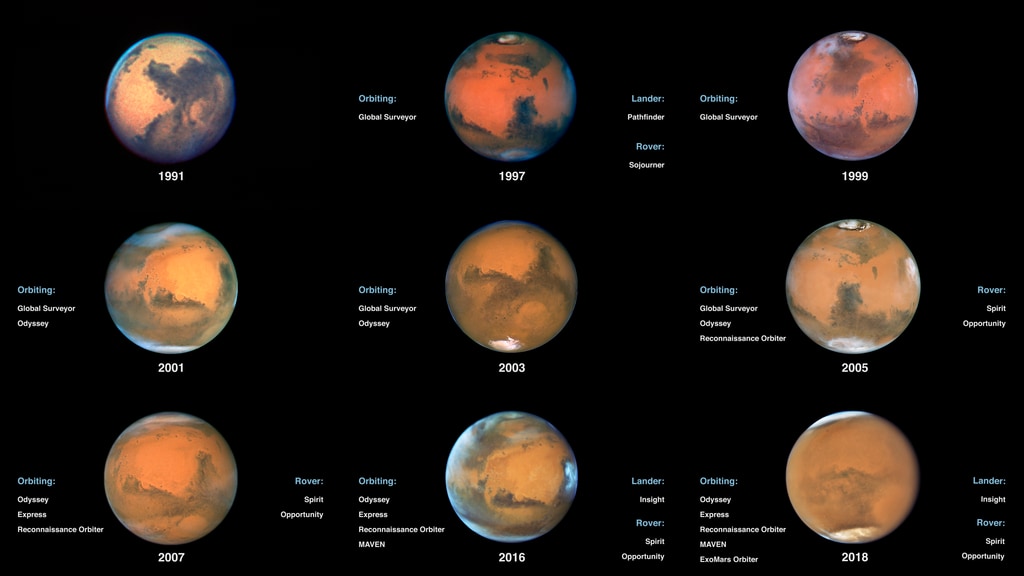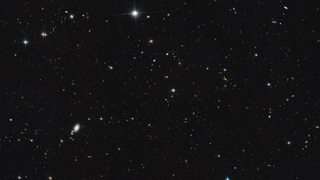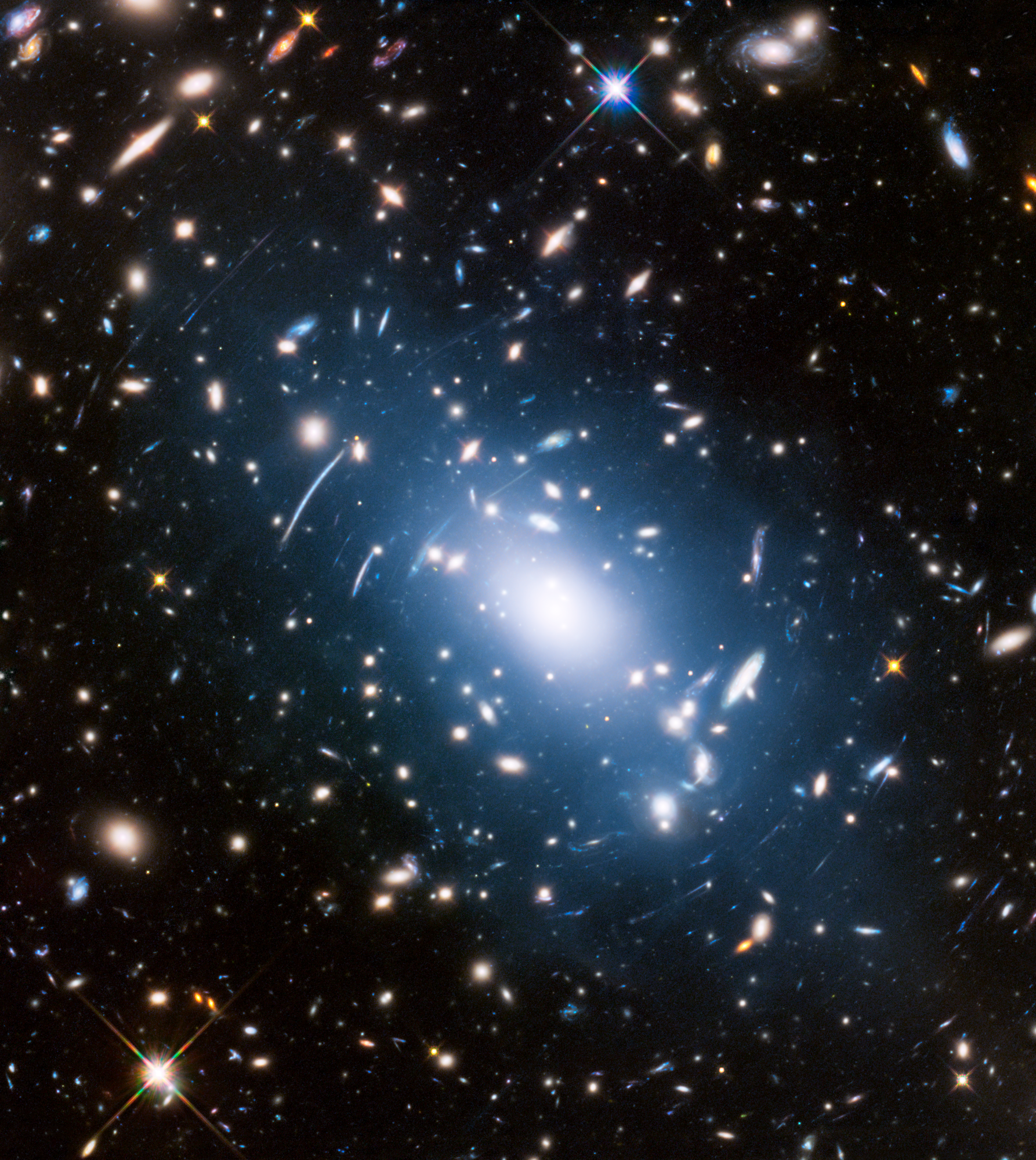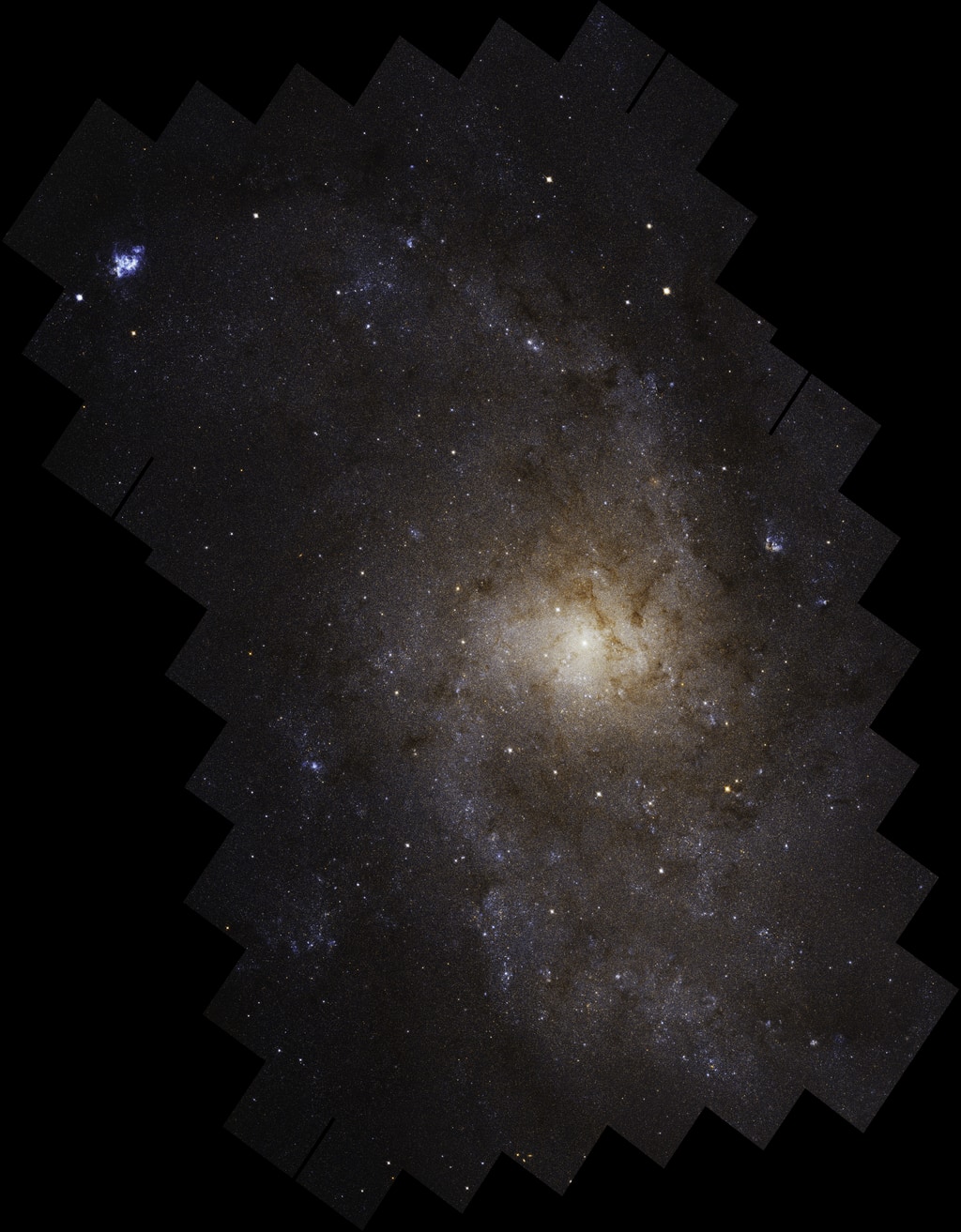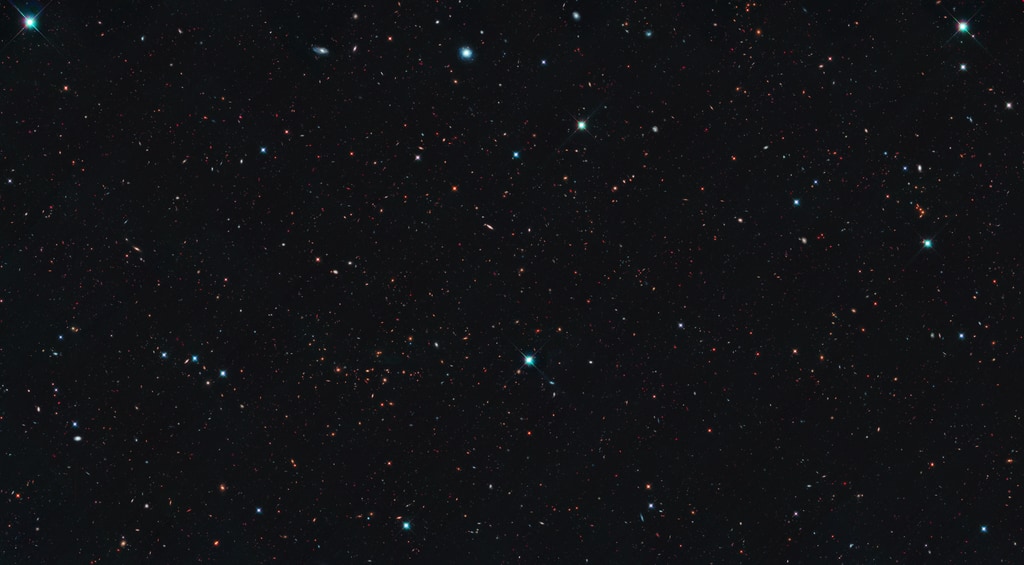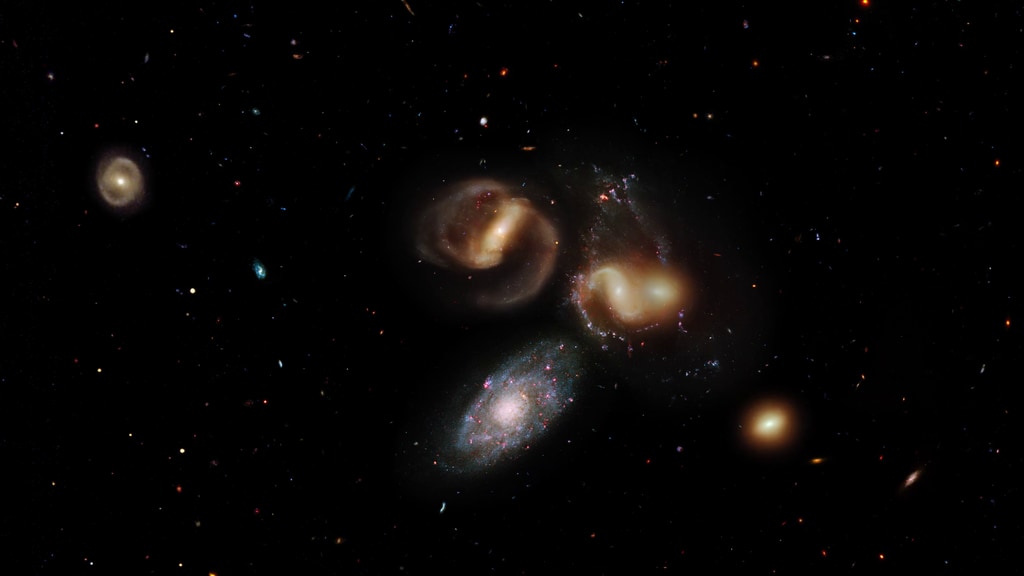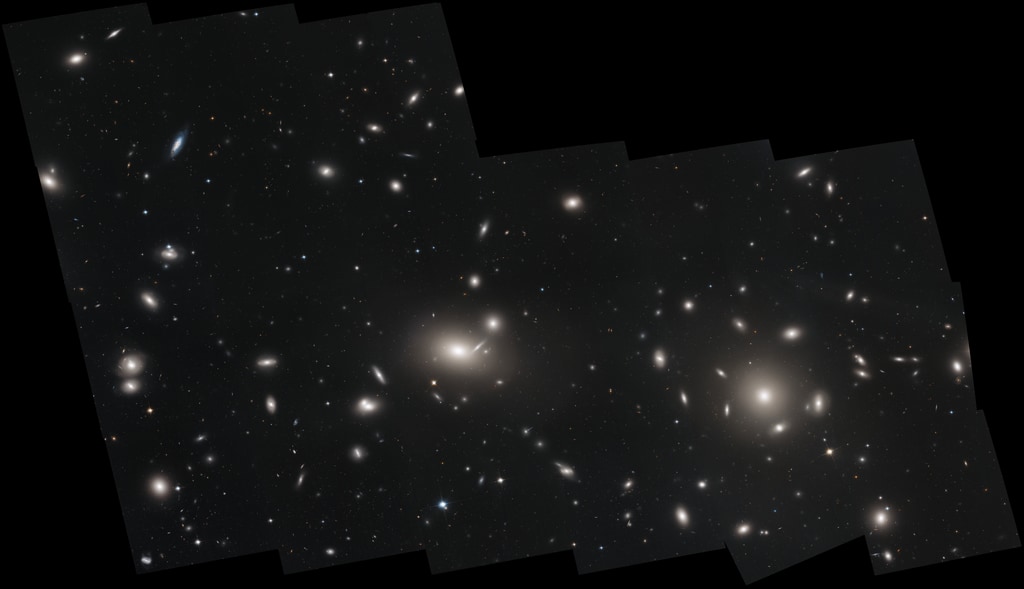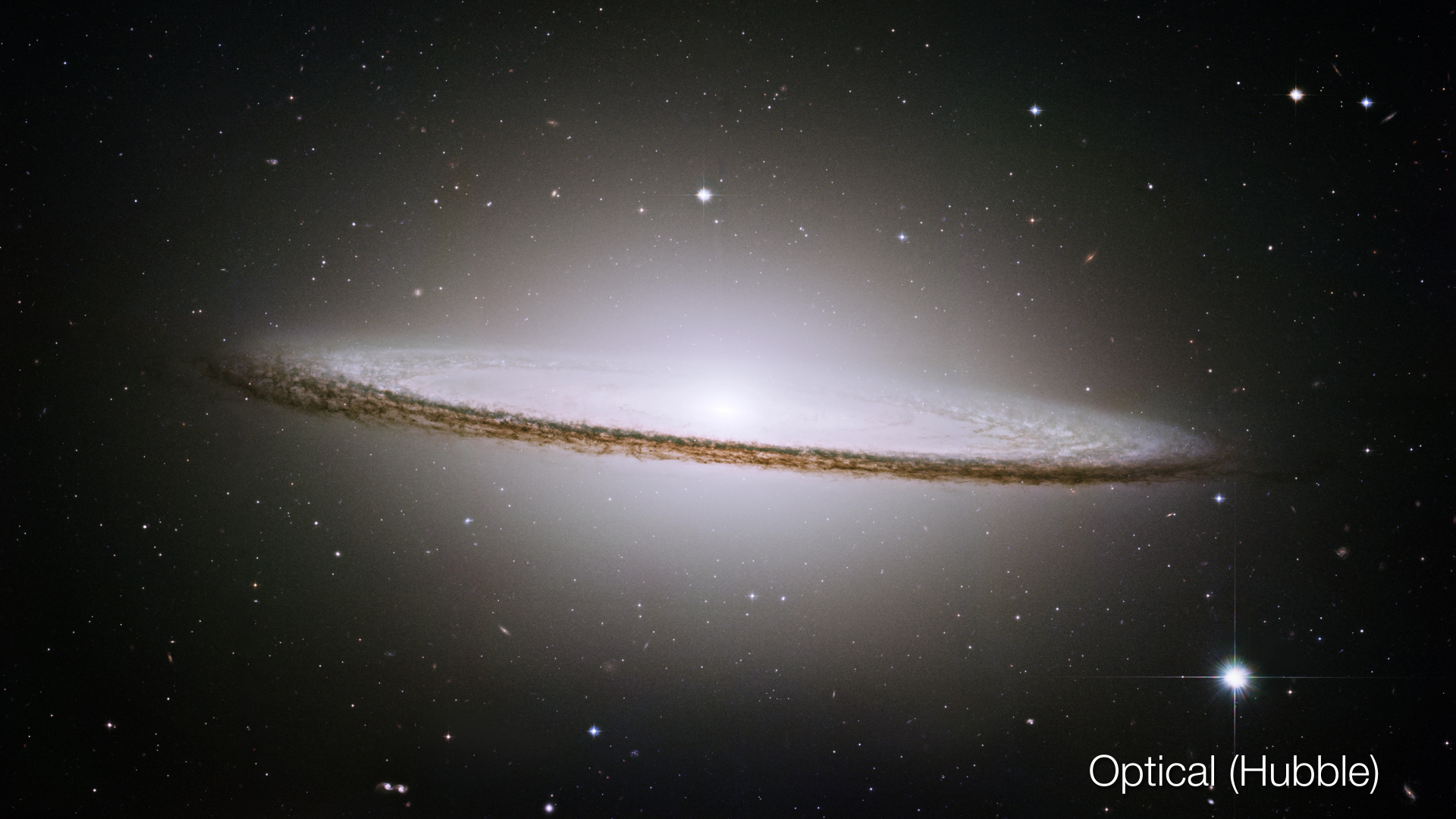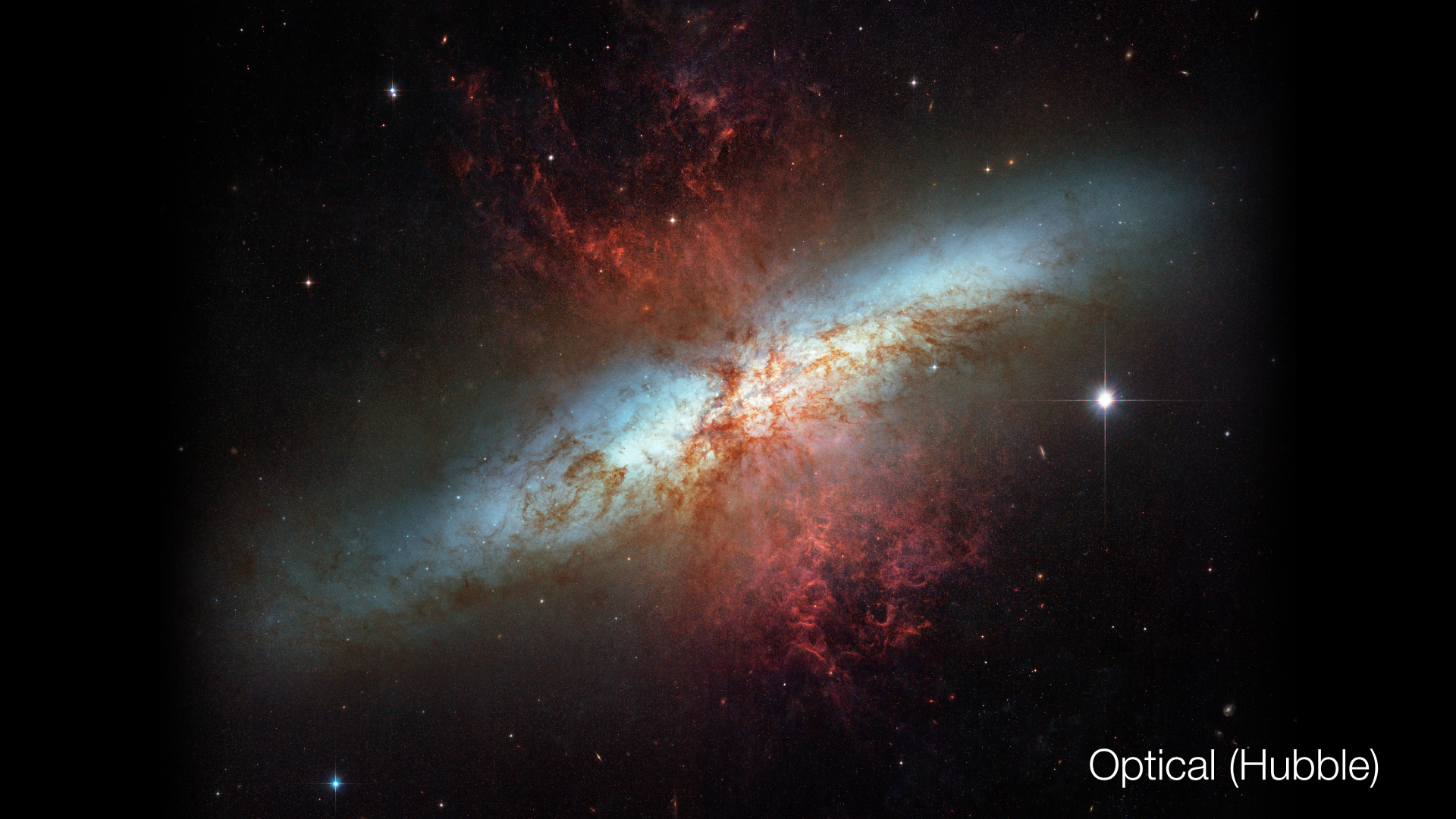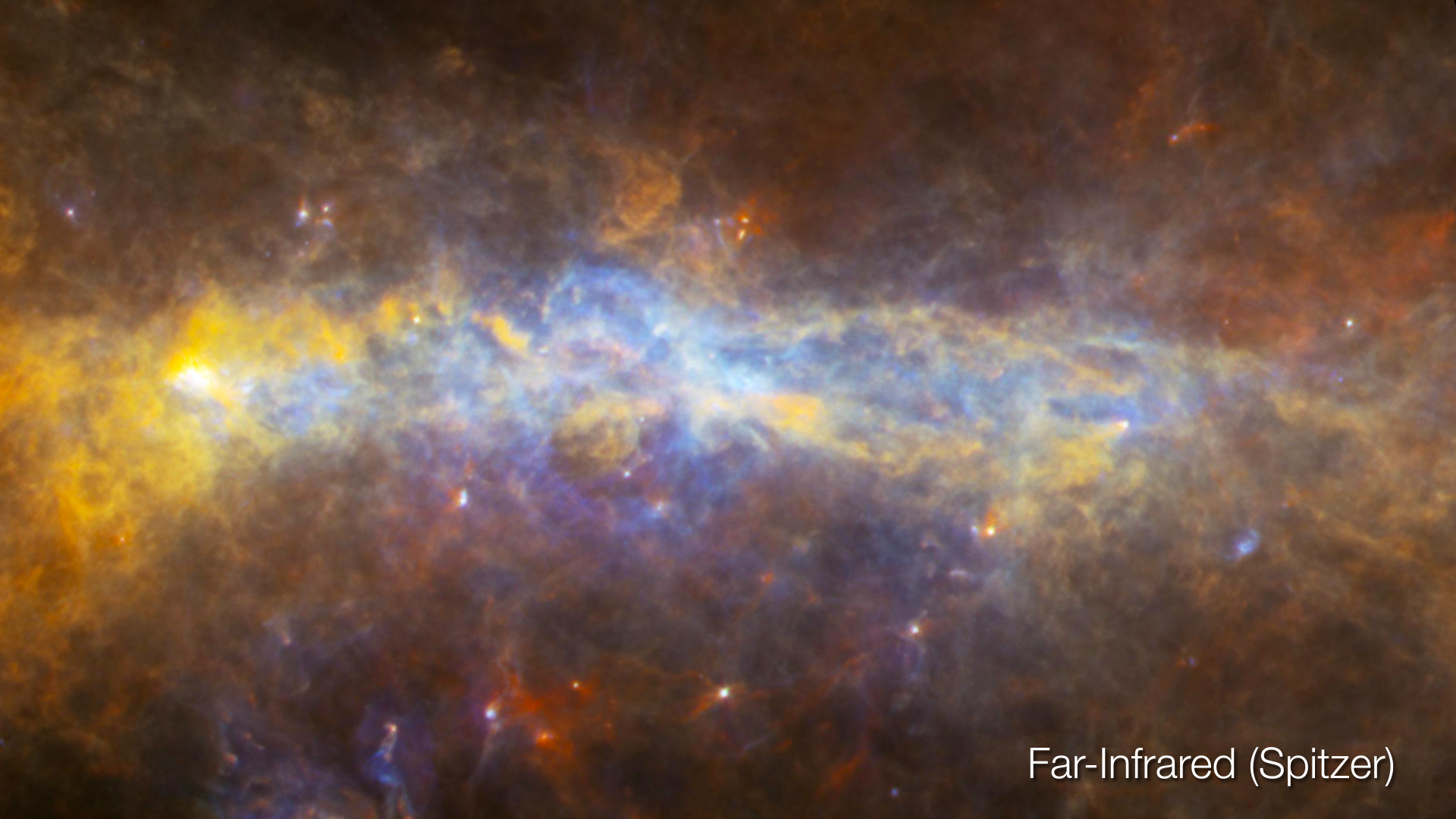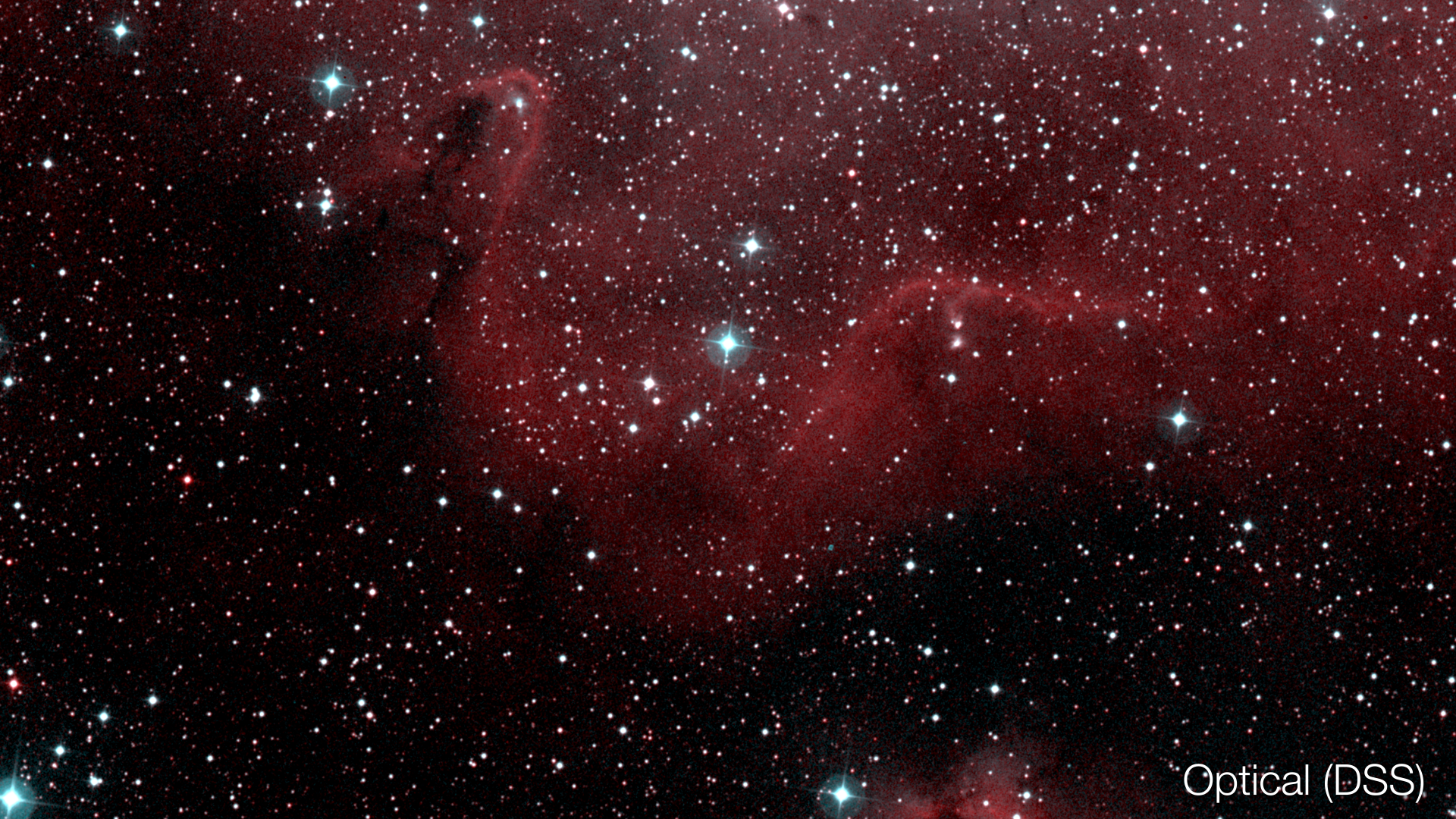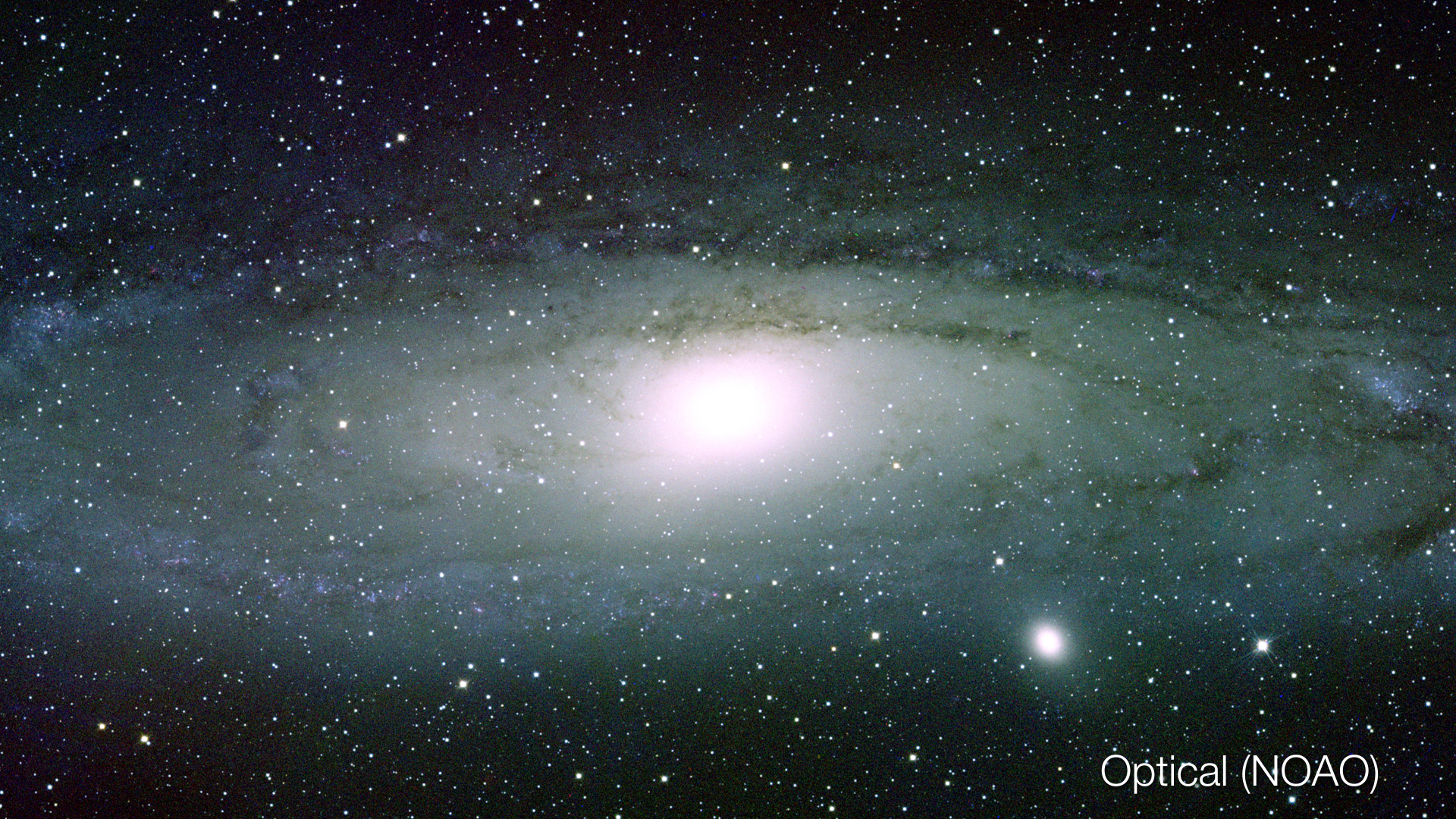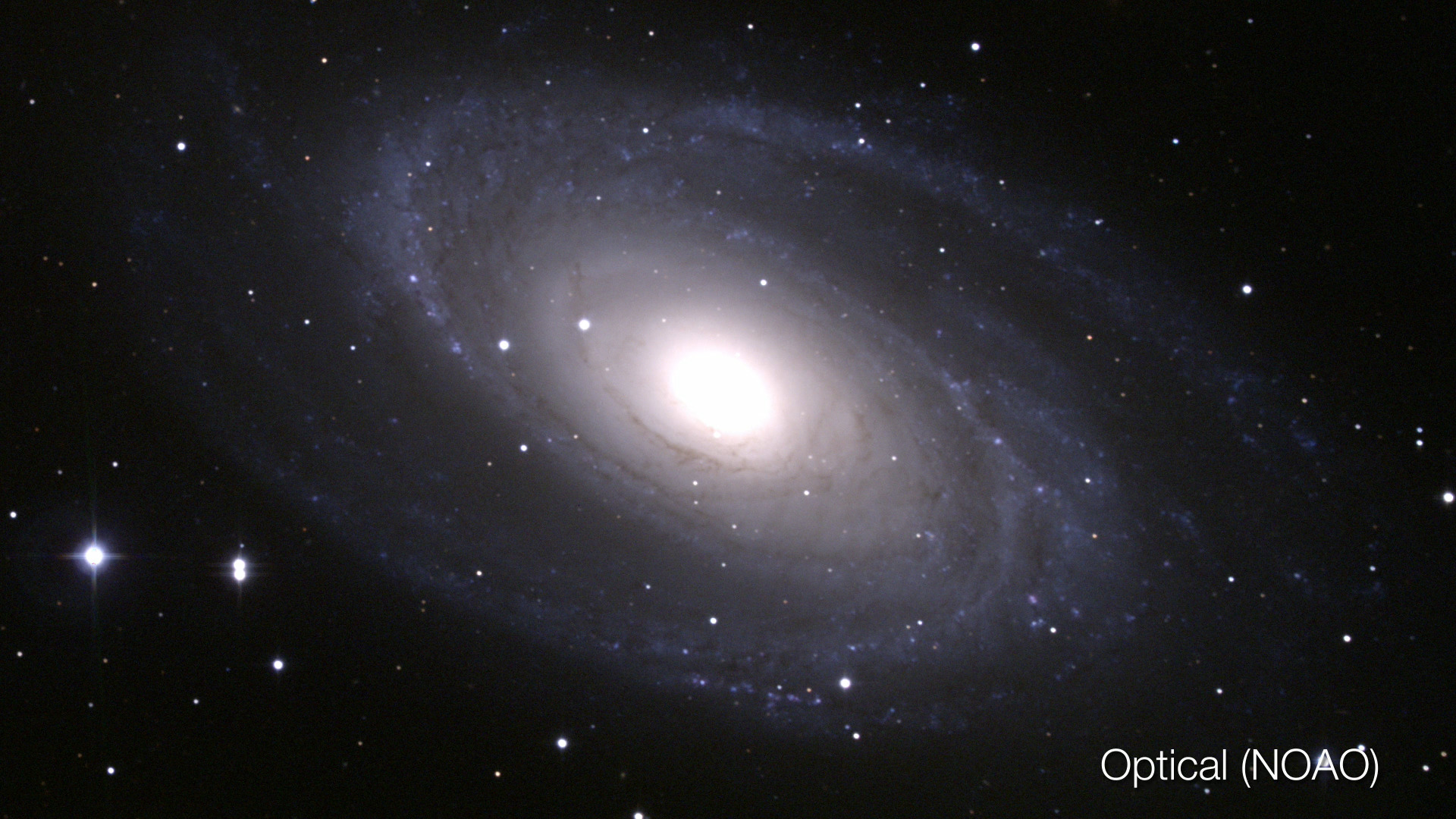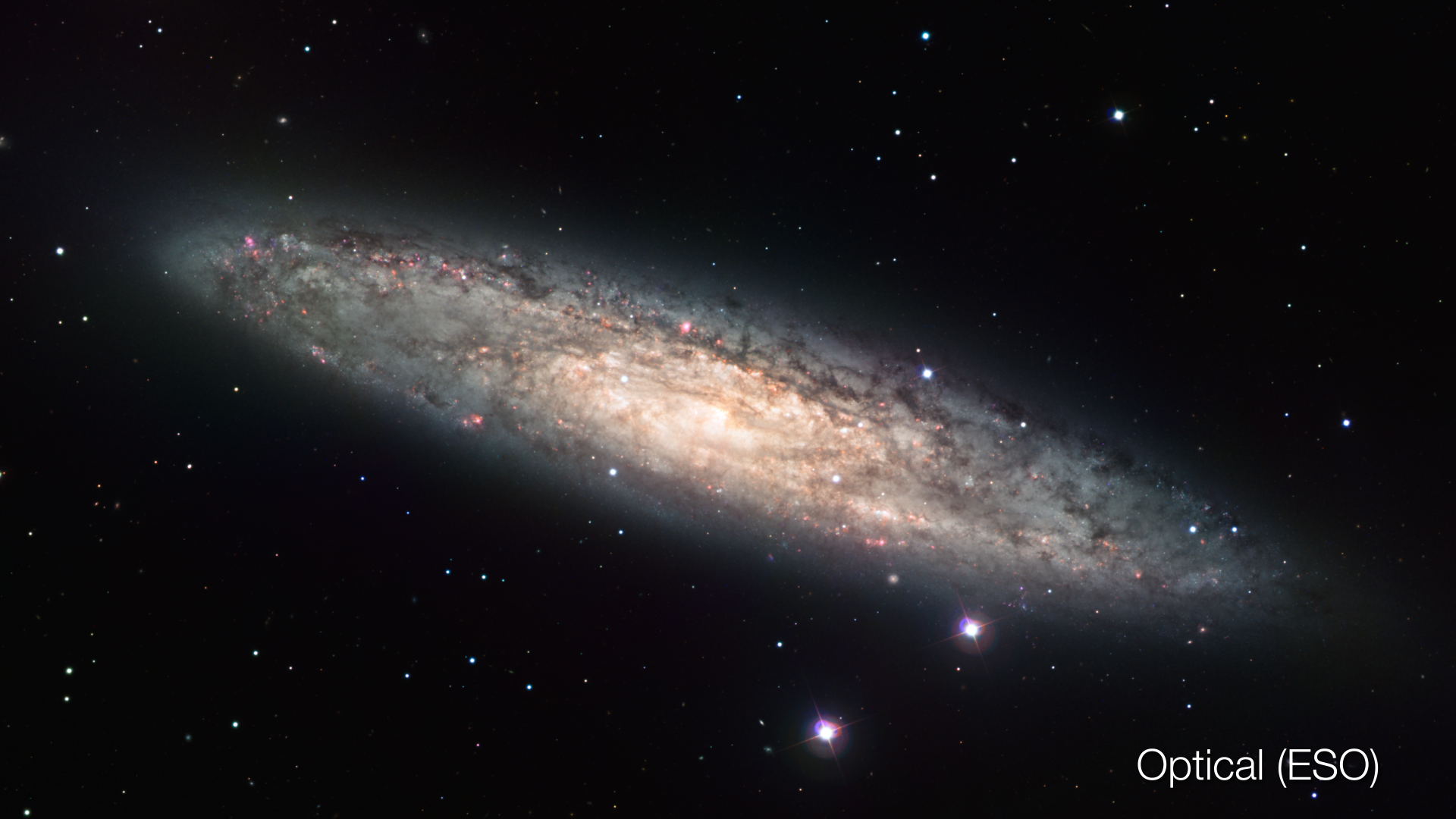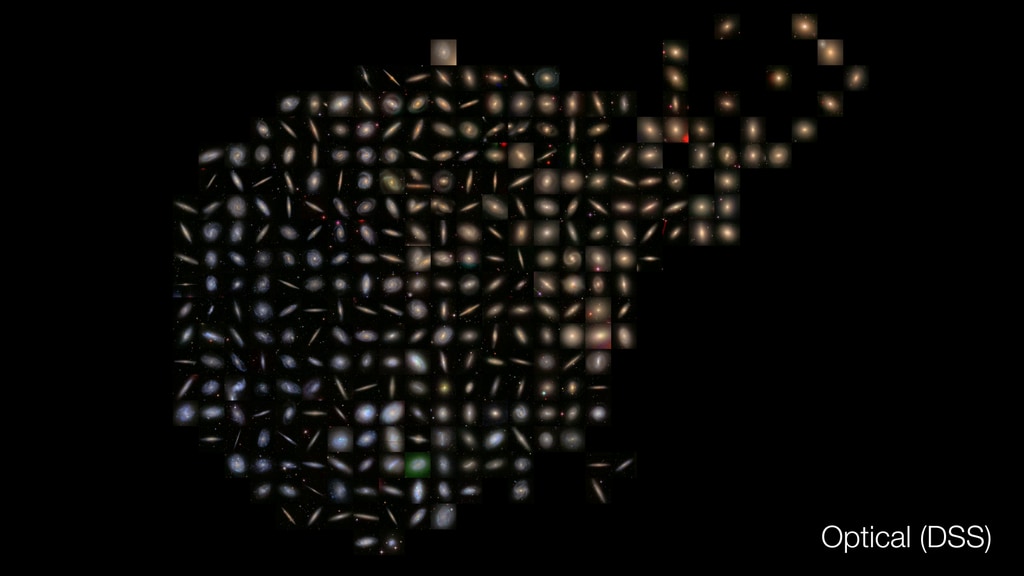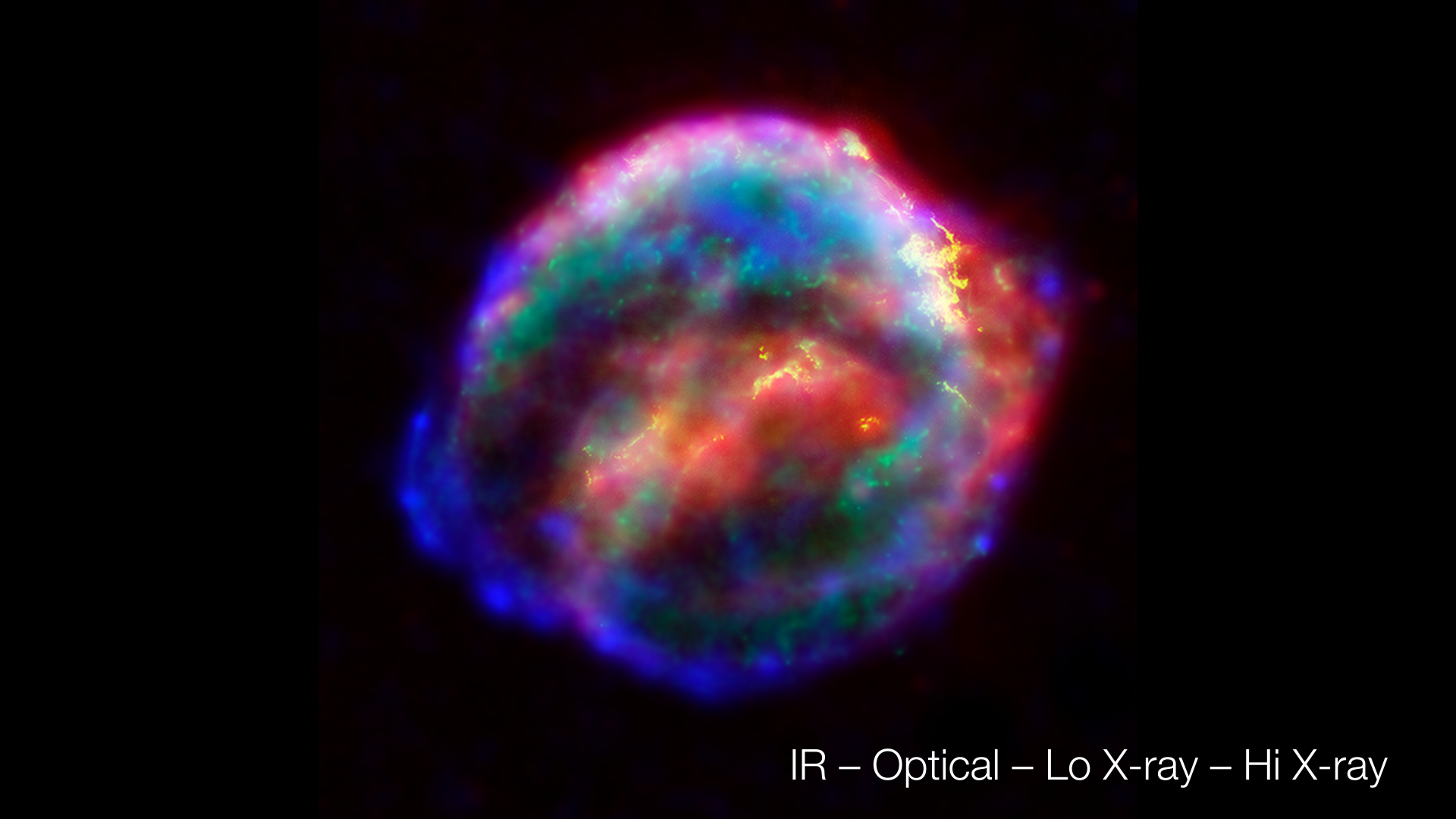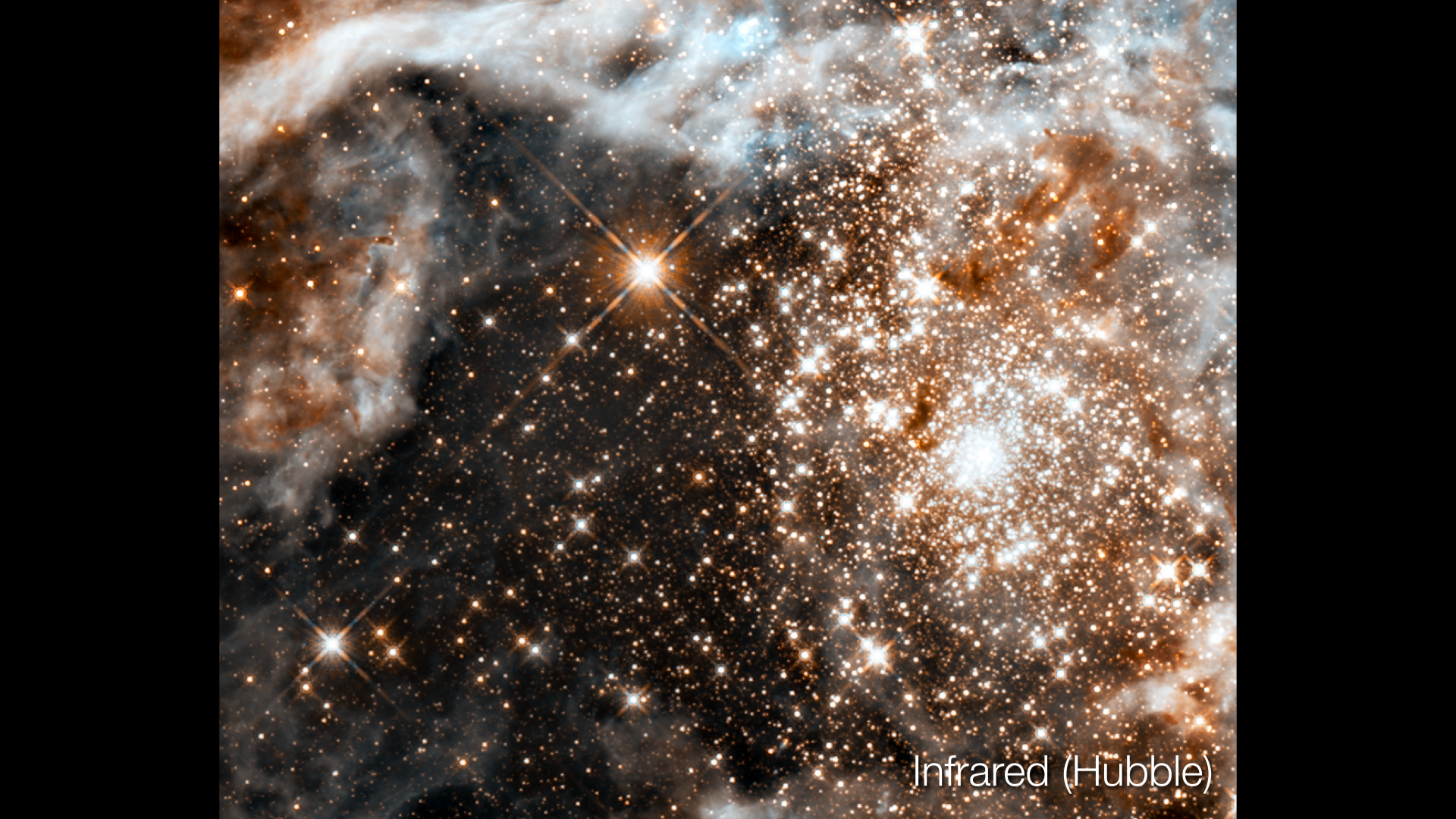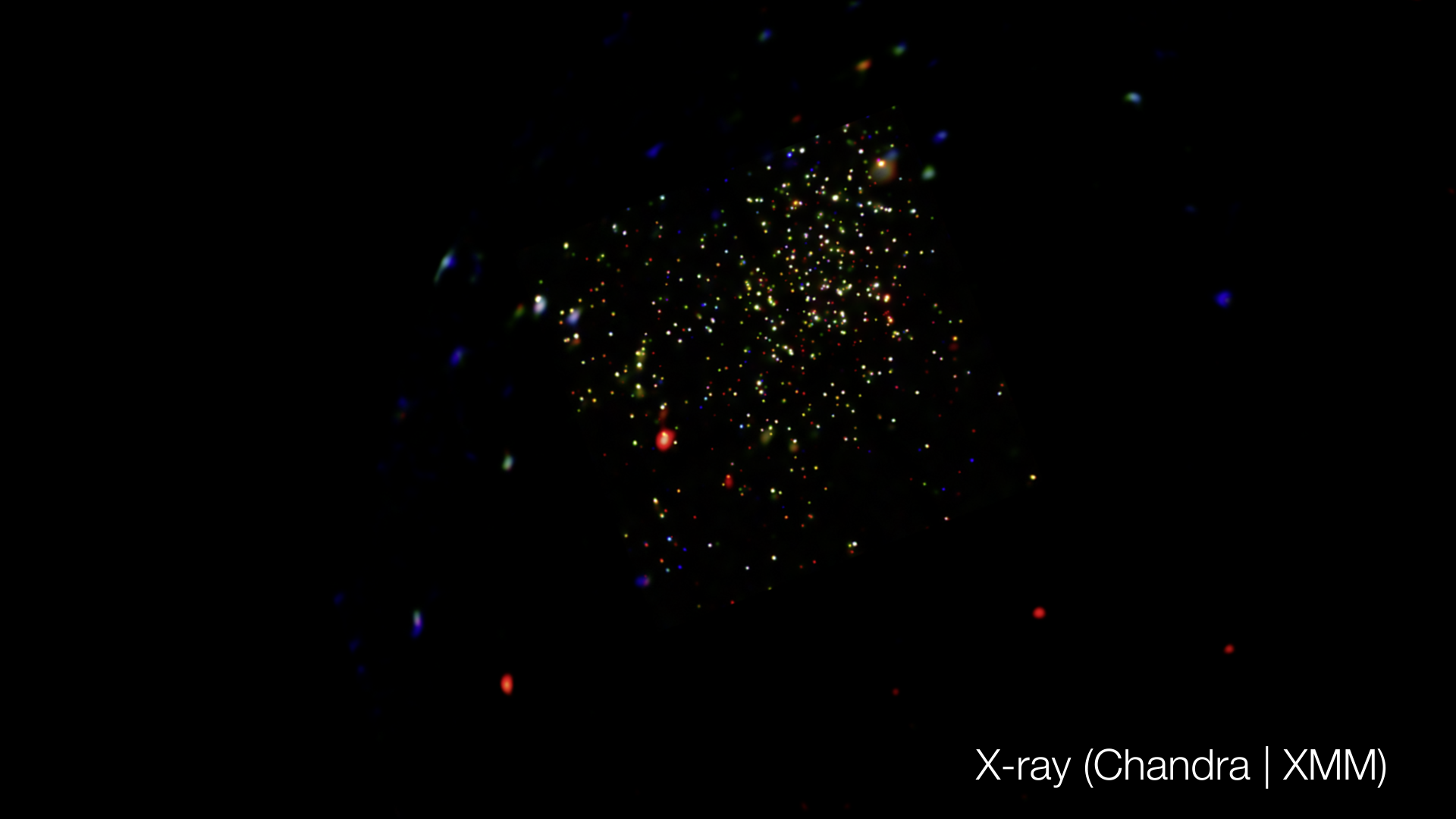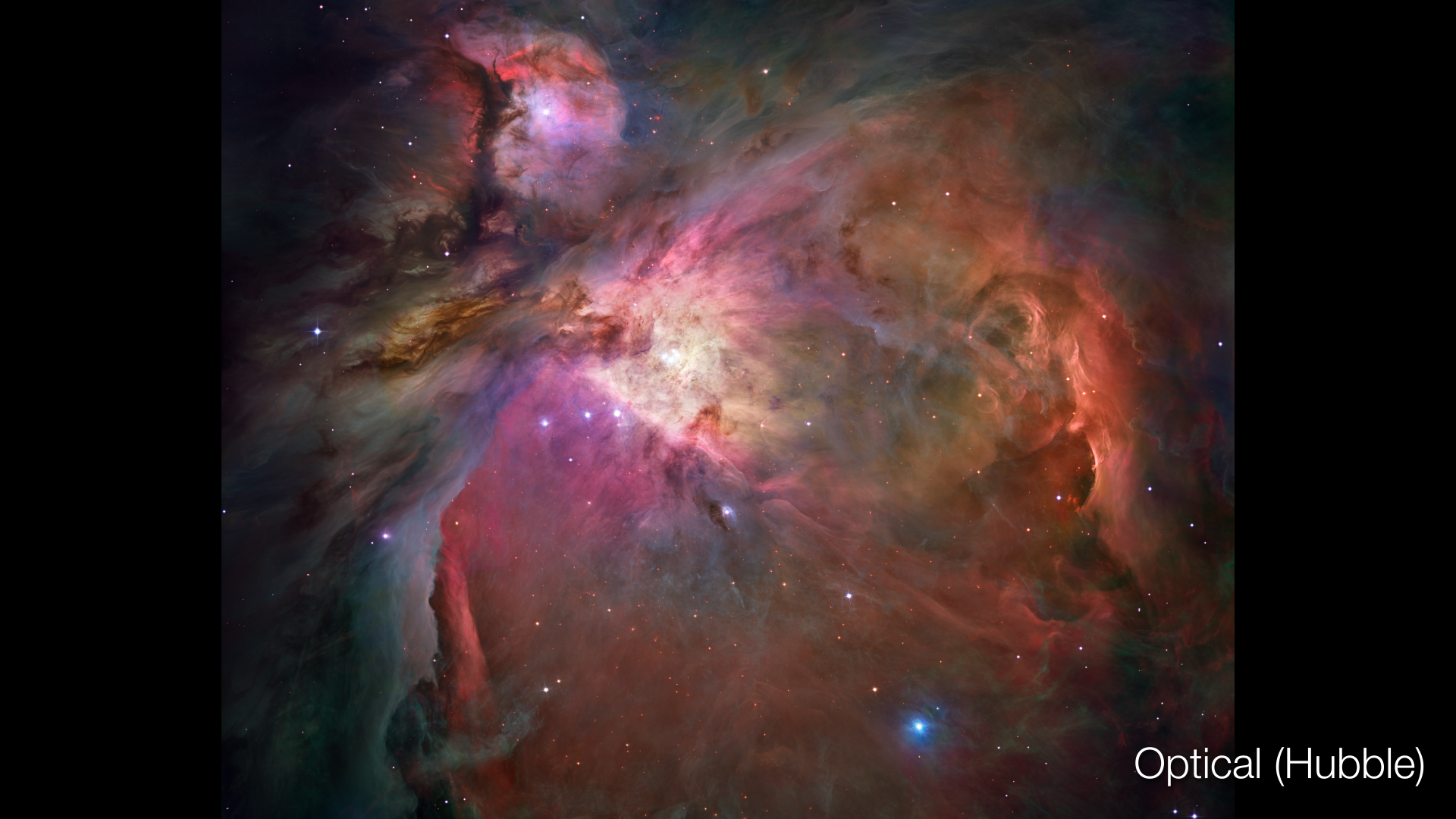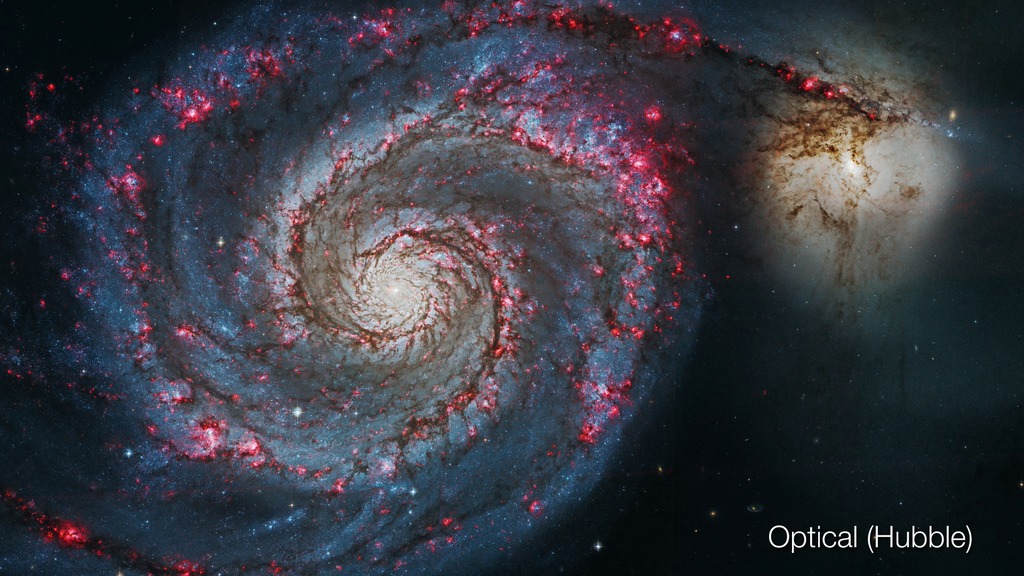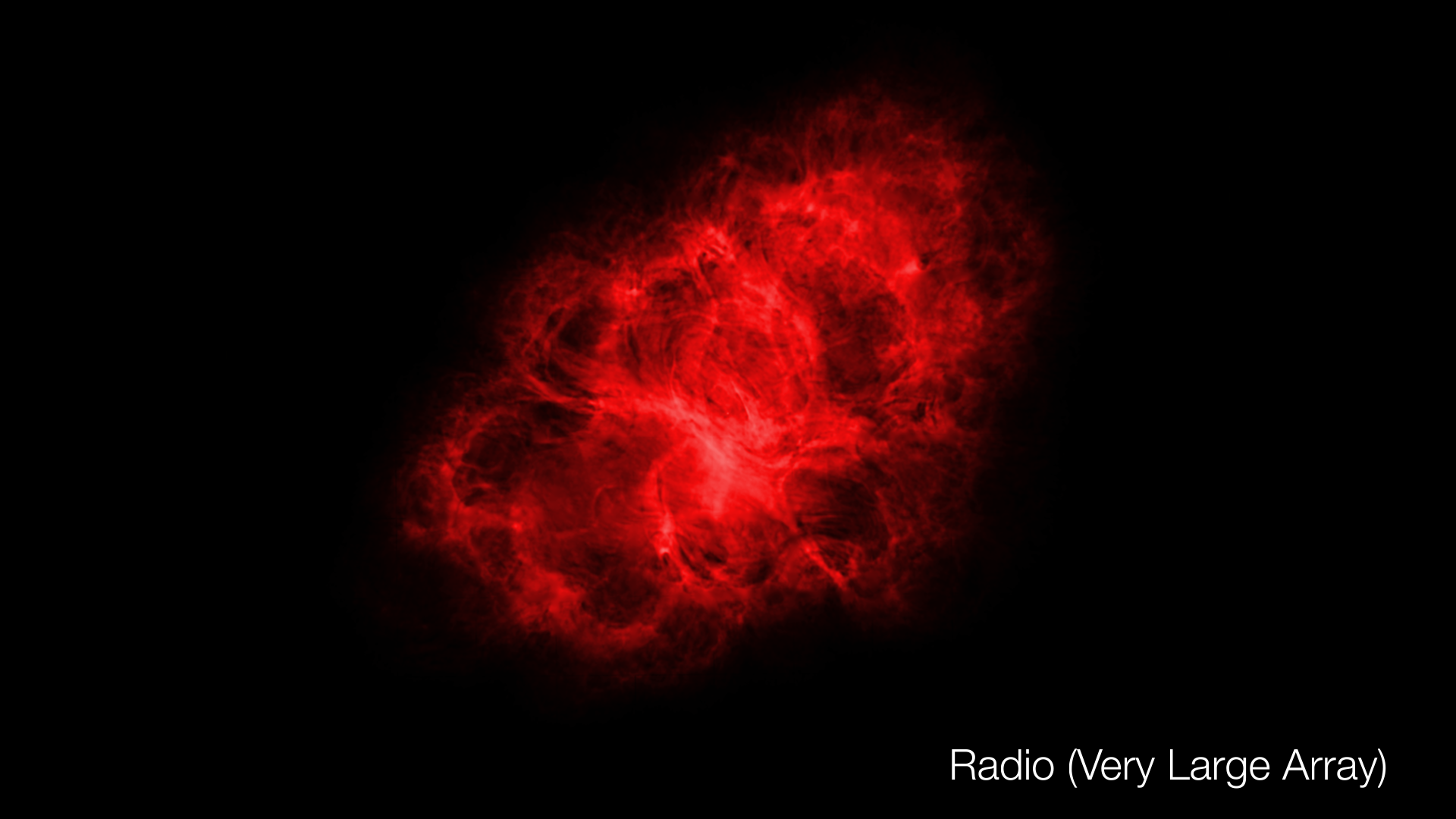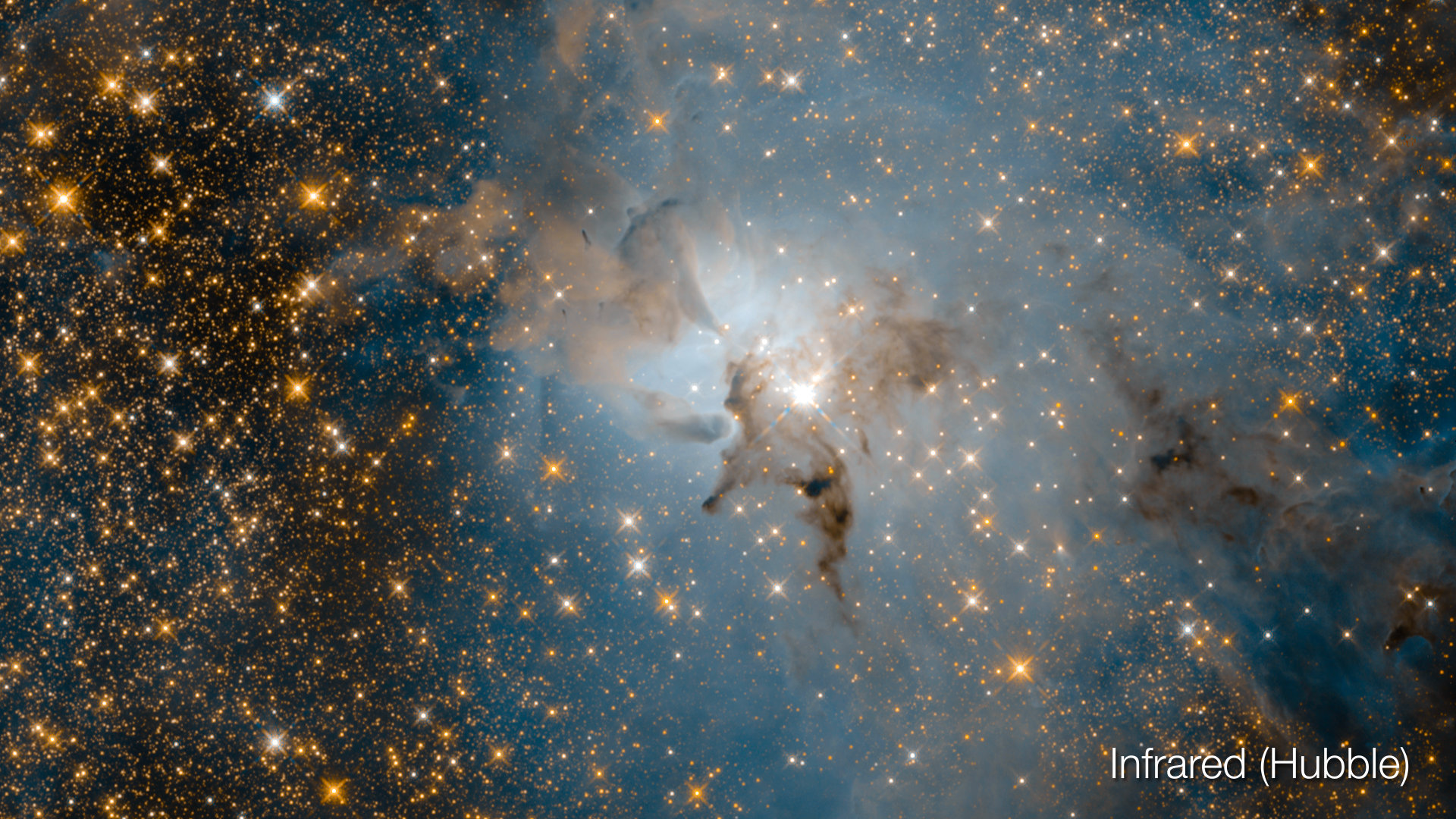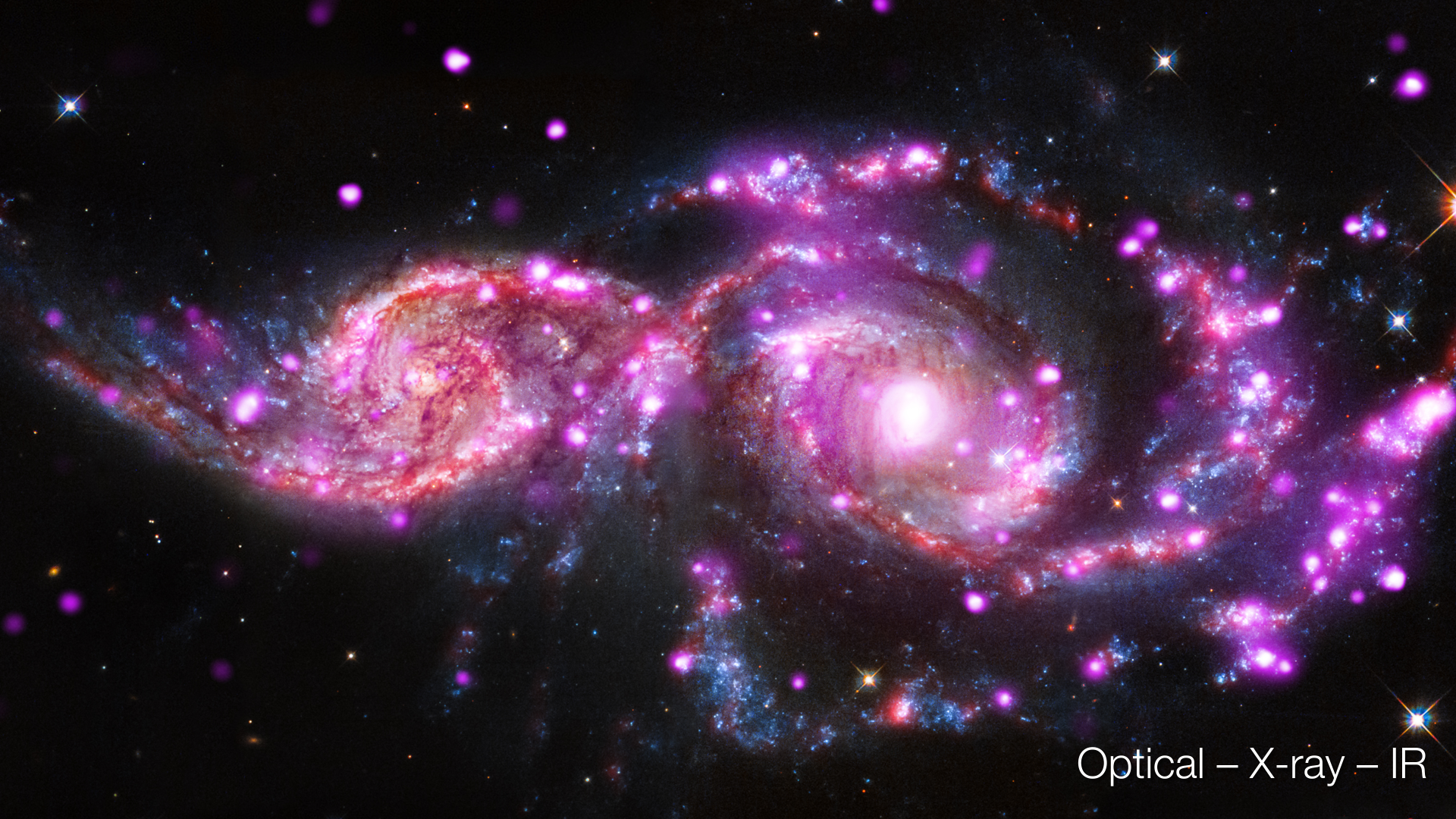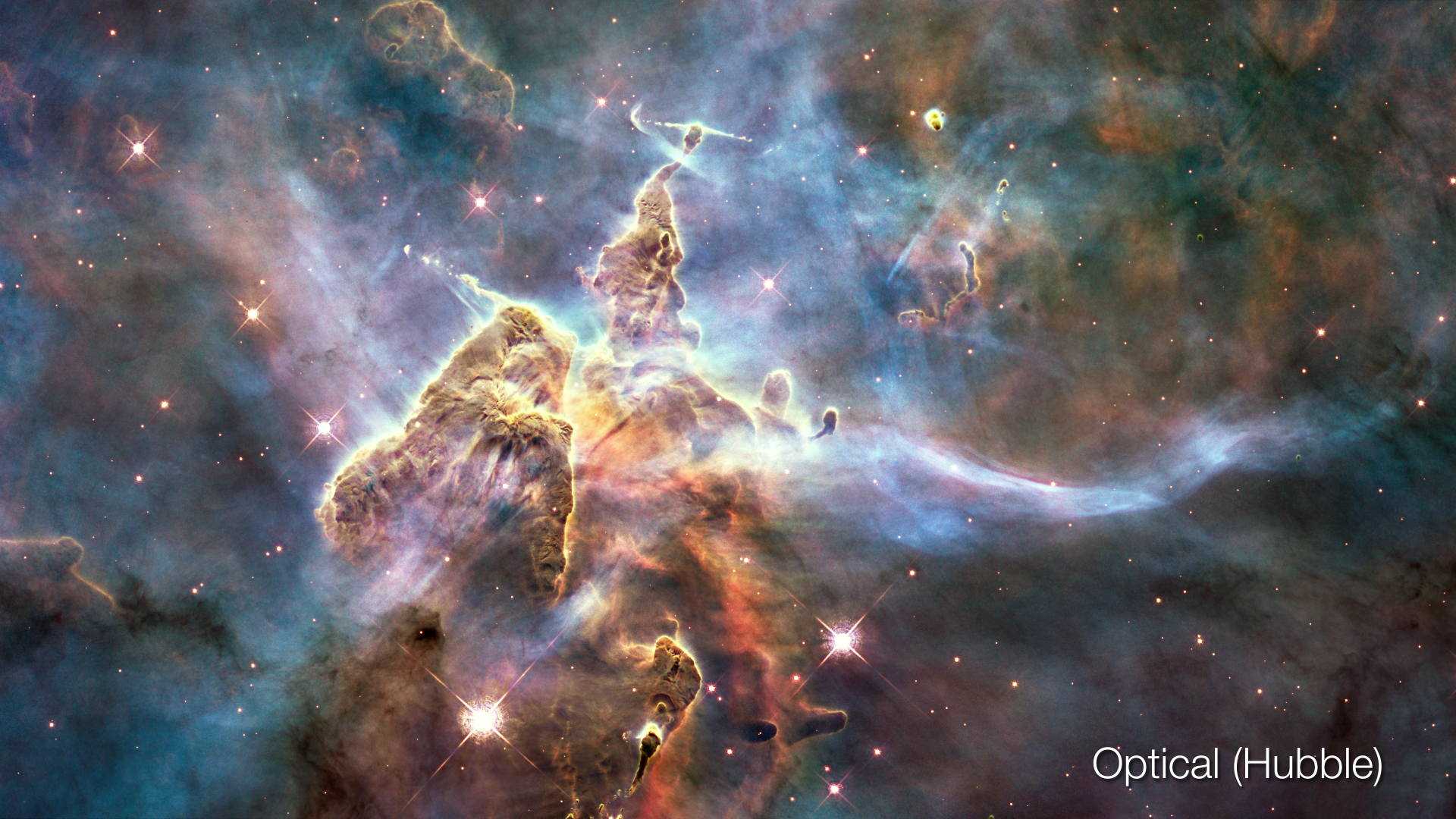M101 (Pinwheel Galaxy)
This animation shows the Messier 101 (Pinwheel) Galaxy, with simulated rotation, in visible, then infrared, then X-ray, and finally all three combined.
M101 is a comparable in size to the Milky Way. The disk is 100 billion solar masses, and the central bulge of about 3 billion solar masses. M101 is rich is pinkish star forming regions, many of which are very large and bright. Unlike most spiral galaxies, M101's spiral shape is notably asymmetrical. This is due to the tidal forces from interactions with its companion galaxies. These gravitational interactions compress interstellar hydrogen gas, which then triggers strong star formation activity in M101's spiral arms.
This animation is the same as above, played twice as fast.

Spitzer Infrared image of M101

Hubble Optical image of M101

Chandra X-ray image of M101

Hubble, Spitzer and Chandra images combined
Credits
Please give credit for this item to:
Video: NASA, ESA, and G. Bacon (STScI)
Image Credit: NASA, ESA, K. Kuntz (JHU), F. Bresolin (University of Hawaii), J. Trauger (Jet Propulsion Lab), J. Mould (NOAO), Y.-H. Chu (University of Illinois, Urbana), and STScI
-
Visualizer
- Greg Bacon (STScI)
-
Image processing
- Kip Kuntz (Johns Hopkins University)
- Fabio Bresolin (University of Hawaii)
- John Trauger (JPL)
- Jeremy Mould (NOAO)
- You-Hua Chu (University of Illinois)
-
Technical support
- Leann Johnson (Global Science and Technology, Inc.)
Release date
This page was originally published on Monday, June 18, 2018.
This page was last updated on Monday, March 10, 2025 at 12:25 AM EDT.
Missions
This page is related to the following missions:Datasets used
-
[Spitzer Space Telescope]
ID: 690This dataset can be found at: http://www.spitzer.caltech.edu/
See all pages that use this dataset -
[Hubble Space Telescope]
ID: 831 -
[Chandra: Telescope System]
ID: 1002
Note: While we identify the data sets used on this page, we do not store any further details, nor the data sets themselves on our site.
